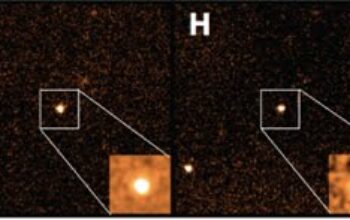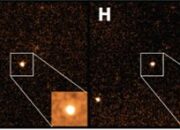The concept of Berry’s phase emerges as a fascinating aspect of quantum mechanics, encapsulating the subtleties of quantum geometry and its implications in various domains, including solid-state physics. When subjected to adiabatic processes, a quantum system can acquire a geometric phase that is distinctly different from the dynamic phase dictated by the system’s evolution. This phenomenon unfolds in systems governed by Hamiltonians that undergo slow and continuous transformations. This paper delves into the significance of Berry’s phase, recent advancements in solid-state qubits, and the insights imparted by the geometric properties of quantum states.
To delineate the essence of Berry’s phase, one must first appreciate the mathematical framework underpinning quantum mechanics. In a simplified view, the state’s evolution can be expressed by a wave function, which can exist on a complex projective Hilbert space. The evolution of this wave function, particularly when the parameters shift slowly, unveils a non-trivial phase factor that is contingent upon the path taken in parameter space. This geometric phase, discovered by Sir Michael Berry in 1984, is consequential since it is invariant under continuous transformations, highlighting a resilience amidst perturbations in the system.
Berry’s phase poses an intriguing question: How can a system exhibit such a phase shift, imperceptible to its observable classical counterpart? When isolated to a closed loop in parameter space, a quantum system can evolve cyclically, acquiring a geometric phase that is devoid of the energy considerations conventional to classical mechanics. This inherent discordance enriches our understanding of quantum phenomena, compelling researchers to explore avenues where this phase manifests in tangible forms, particularly in solid-state systems.
Recent advancements in quantum computation have led to a resurgence of interest in solid-state qubits, which are often touted for their potential to form the cornerstone of quantum technologies. Solid-state qubits typically include superconducting qubits, quantum dots, and spin-based systems. Notably, the implementation of Berry’s phase in these qubit architectures is not merely a theoretical curiosity but offers a pathway to enhanced coherence times and robust quantum gates.
Within the realm of superconducting qubits, for instance, the manipulation of qubit states utilizing Berry’s phase has been shown to mitigate detrimental effects from environmental noise. The presence of geometric phases can afford q-bits a form of protection — which has direct implications for fault-tolerant quantum computation. The ability to harness Berry’s phase equates to more versatile operations and a higher degree of operational fidelity, driving further research into integrating these phases within quantum networks.
Moreover, when examining spin qubits, Berry’s phase reveals itself in the fine-tuning of interactions among multiple spins in solid-state systems. The coupling of spatial and spin degrees of freedom can lead to compelling scenarios where the geometric phase encoded in spin dynamics plays a pivotal role. For example, the manipulation of quantum dot systems has demonstrated how Berry’s phase can facilitate non-abelian statistics potentially advantageous in topological quantum computing.
As one traverses deeper into the implications of Berry’s phase, it becomes evident that a playful question arises: Could the intricate nature of geometric phases lead to novel quantum information protocols? The exploration of Berry’s phase within quantum algorithms presents an uncharted territory with the potential to redefine notions of coherence, control, and efficiency. By systematically studying the geometric characteristics of quantum states, researchers may unravel new solutions to longstanding challenges in quantum computation and error correction.
Nonetheless, this framework is not bereft of challenges. The implementation of Berry’s phase in practical applications necessitates stringent experimental conditions to ensure the system remains in the adiabatic regime throughout its evolution. Furthermore, characterizing and engineering the requisite Hamiltonians to produce desired geometric phases may prove daunting, especially in systems where decoherence and operational noise are non-negligible. Hence, devising protocols that integrate Berry’s phase curatively within existing technological frameworks remains an essential ongoing pursuit.
Ultimately, the intersection of Berry’s phase and solid-state qubit architectures elucidates the rich tapestry of quantum geometric properties and their transformation into physical realizations. It compels researchers to reconsider the conventional paradigms of phase interactions. As solid-state physics thrives in the expanse of quantum technologies, unearthing the potential of Berry’s phase may grant the frontier of quantum computing not just innovative devices but profound insights into the very fabric of quantum reality.
In conclusion, exploring Berry’s phase through the lens of solid-state qubits showcases the finesse and complexity of quantum phenomena that surpasses mere computation. The journey into quantum geometries not only fortifies the theoretical underpinnings of quantum mechanics but also reinforces the practical implications that can be harnessed within burgeoning quantum systems. As scholars persist in this exploration, one can only anticipate the transformational outcomes stemming from a deeper understanding of Berry’s phase and its implications on future quantum technologies—prompting a reexamination of traditional methodologies in quantum information science.









